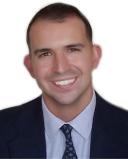Psychiatry
The Biopsychosocial Model 45 Years Later
Revisiting George Engel's pluralistic model of mental disorder.
Posted May 29, 2021 Reviewed by Ekua Hagan
Key points
- Developed by George Engel in 1977, the biopsychosocial model provides a useful paradigm for understanding mental illness.
- Biological, psychological, and social variables are considered etiological in mental disorder.
- The biopsychosocial model has important treatment implications.
- Nearly 45 years later, it remains the predominant theoretical model in American psychiatry.

"A good physician treats the disease; a great physician treats the patient who has the disease."—William Osler
In the 1960s, American psychiatry was fraught with an intense division between the traditional psychoanalytic "camp," convinced that Freud and psychoanalysis held the answers to all mental—and human—problems, and a biological "camp," enthused by a number of rapid and exciting developments in the field of psychopharmacology, which allowed, for the first time, patients with chronic, severe mental disorder to be discharged to the community.
American psychiatrists—and to a much lesser degree, other mental health professionals—generally found themselves on one side of this debate. Some analysts, for instance, refused to prescribe the new medications, insisting that they offered only symptomatic improvement and that to remove the symptoms too early in the treatment would be to eliminate the possibility of a psychological cure. In contrast, many biologically-minded psychiatrists became increasingly skeptical of the psychoanalysts' claims that even severe mental disorders, like schizophrenia and manic-depressive illness, could be successfully treated with intensive psychotherapy alone.
Attempts to unify contrasting theories of mental disorder can be found throughout the history of modern psychiatry. For instance, Bleuler's classic writings on schizophrenia incorporate both physiological and psychological explanations and are perhaps the first example of a "biopsychosocial" approach to psychiatry (see Bleuler, 1950). The work of the late psychiatrist Silvano Arieti also attempts to bridge psychodynamic and biological conceptualizations of this severe disease (see, for instance, Arieti, 1974; Ruffalo, 2021).
Nevertheless, it was not until George Engel, a psychiatrist and internist at the University of Rochester Medical Center in New York, published his seminal paper on the biopsychosocial model in 1977 that a formalized, pluralistic model of mental disorder became widely accepted by psychiatrists and other mental health professionals.
In sum, Engel contended that mental disorder—and medical illness more generally—results from a complex and dynamic interplay between physiological, psychological, and social variables. To understand depression, for instance, one must take into account a person's genetic predispositions and biology; their early relationships, beliefs about self, and broader psychological development; and potential social influences, such as financial strain or relationship discord.
The biopsychosocial model has real practical implications. If psychiatric disorders are complex, multidimensional problems, then the treatment of such disorders should generally incorporate methods to address each potentially etiological variable. In practice, this would include some combination of medication or biological treatment, psychotherapy, and case management or social work. In fact, there is good evidence that a combined pharmacological and psychotherapeutic approach is most effective for most psychiatric conditions.
Unfortunately, the mental health system in the United States, as currently organized, is not equipped to provide such comprehensive care to many patients due to years of underfunding and the closure of many hospitals and community mental health programs. The average patient with schizophrenia, for instance, sees his psychiatrist once every month or three months and receives only short-term, time-limited counseling, if he receives any form of therapy at all. Access to case management and social services for these patients is also generally poor.
In recent years, there have been renewed attempts to reduce psychiatric illness to a single causal factor. For instance, a so-called "trauma-informed" model of mental disorders is now fashionable amongst some clinicians; some claim that trauma is the cause of virtually all mental disorder. These psychologically reductionistic claims are extremely short-sighted; they fail to take into account the failure of former traumatogenic hypotheses (e.g., the schizophrenogenic mother) and the vast biological findings accumulated over the past 50 years.
Similarly, biologically-reductionistic claims, such as the belief that major depression is solely the result of some underlying malfunction of the central nervous system, fail to incorporate decades of research on the many known psychosocial contributions to mental disorder.
Now nearly 45 years old, George Engel's biopsychosocial model unified American psychiatry at a time when the field needed it most. His model provides a useful framework for understanding the nature of some of humanity's most complex illnesses. With good reason, it continues to be taught to psychiatry residents and psychotherapy trainees across the world. We ought to continue to heed its guidance.
References
Arieti, S. (1974). Interpretation of schizophrenia (2nd ed.). Basic Books.
Bleuler, E. (1950). Dementia praecox or the group of schizophrenias. International Universities Press.
Engel, G. (1977). The need for a new medical model: A challenge for biomedicine. Science, 196, 129-136.
Pies, R. W. (2020). Can we salvage the biopsychosocial model? Psychiatric Times. https://www.psychiatrictimes.com/view/can-we-salvage-biopsychosocial-mo…
Ruffalo, M. L. (2021, April 4). Revisiting Silvano Arieti on schizophrenia. Psychology Today. https://www.psychologytoday.com/us/blog/freud-fluoxetine/202104/revisit…


